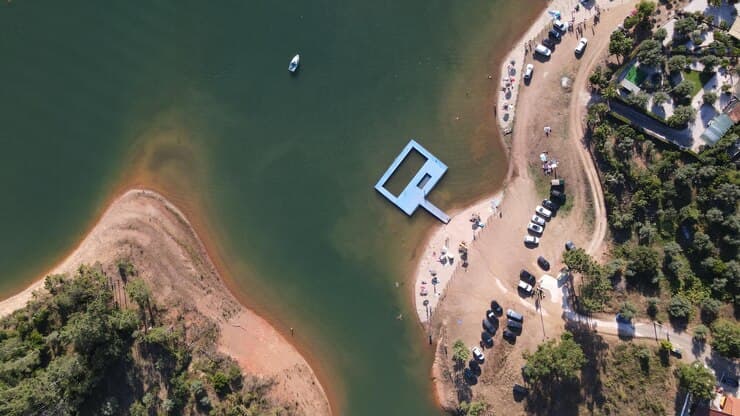Aerial drone photography has revolutionized the way visual content is created, offering breathtaking perspectives and unique shots that were once difficult or impossible to achieve. From real estate marketing and environmental monitoring to filmmaking and surveying, aerial drone photography has become an invaluable tool across many industries. However, operating drones for aerial photography requires a thorough understanding of legal regulations and safety protocols to ensure responsible and lawful use. This article outlines key steps and best practices for legally and safely conducting aerial drone photography.
Understanding Legal Requirements for Aerial Drone Photography
Federal Aviation Administration Regulations
In the United States, the Federal Aviation Administration regulates drone operations, including those used for aerial drone photography. Operators must comply with Part 107 rules, which cover commercial drone use. This includes registering the drone, flying within visual line of sight, adhering to altitude limits, and avoiding restricted airspace.
Obtaining the Required Certifications
Commercial drone pilots need to obtain a Remote Pilot Certificate from the FAA. This certification requires passing an aeronautical knowledge test, which covers topics such as airspace classification, weather conditions, and emergency procedures. Holding this certificate ensures that drone operators understand the legal and safety standards essential for aerial photography.
Complying with Local and State Laws
Beyond federal rules, local governments may have additional restrictions governing drone flights. Certain parks, landmarks, or private properties may prohibit drone use. Operators must research and comply with all applicable state and municipal regulations to avoid legal issues.
Respecting Privacy Laws
Privacy concerns are paramount when conducting aerial drone photography. Operators must avoid capturing images or videos of individuals without consent, especially in private spaces. Awareness of privacy laws and ethical considerations helps maintain trust and avoids potential legal repercussions.
Preparing for a Safe Aerial Photography Session
Conducting Pre-Flight Inspections
Safety begins with a thorough pre-flight inspection of the drone and its components. Checking battery levels, propellers, cameras, and control systems ensures that the equipment is functioning properly and reduces the risk of technical failures during flight.
Planning the Flight Path
Effective flight planning involves mapping out the desired routes and angles to capture the necessary footage while avoiding obstacles and restricted areas. Utilizing tools like GPS mapping software can assist in creating safe and efficient flight paths.
Monitoring Weather Conditions
Weather plays a significant role in drone operation safety. Wind, rain, fog, and extreme temperatures can affect drone stability and battery life. Operators should monitor weather forecasts closely and postpone flights if conditions are unfavorable.
Establishing Communication Protocols
For larger projects, especially those involving multiple team members, establishing clear communication protocols is essential. Using radios or mobile devices helps maintain coordination and ensures swift responses to any unexpected situations.
Best Practices During Flight for Safe and Legal Operation
Maintaining Visual Line of Sight
FAA regulations require that operators maintain visual line of sight with their drone at all times. This practice prevents collisions and ensures better control over the drone’s movements.
Avoiding No-Fly Zones and Restricted Airspace
Certain areas such as airports, military bases, and national parks are designated no-fly zones. Operators must use official airspace maps and notification systems to avoid entering these restricted areas, thereby complying with the law and enhancing safety.
Managing Flight Altitude and Speed
Staying within the authorized altitude limits, typically under 400 feet, helps prevent interference with manned aircraft. Controlling the drone’s speed also improves maneuverability and reduces the chance of accidents.
Being Mindful of People and Property
Safe drone operation involves avoiding flying directly over people, moving vehicles, or private properties without permission. Respecting the safety and privacy of others helps prevent injuries, damage, and complaints.
Post-Flight Procedures for Aerial Drone Photography
Reviewing and Backing Up Footage
After each flight, it is important to review the captured images and videos to ensure quality and completeness. Promptly backing up the data protects against loss and facilitates further editing or analysis.
Inspecting the Drone for Wear and Tear
Post-flight inspections help identify any damage or wear that occurred during operation. Regular maintenance keeps the drone in optimal condition and extends its lifespan.
Logging Flight Data
Maintaining detailed flight logs, including date, location, flight duration, and any incidents, supports regulatory compliance and helps improve future operations. Flight records can be essential in case of audits or investigations.
Advancements and Emerging Trends in Aerial Drone Photography
Integration with AI and Automated Flight Systems
Emerging technologies such as artificial intelligence and automated flight planning are enhancing the precision and efficiency of aerial drone photography. These advancements allow for more complex and repeatable flight patterns with minimal human intervention.
Use of High-Resolution Cameras and Sensors
New drone models feature increasingly sophisticated cameras and sensors, capable of capturing ultra-high-definition images and multispectral data. These innovations expand the applications of aerial drone photography across industries like agriculture and infrastructure inspection.
Emphasis on Sustainable and Eco-Friendly Practices
With growing environmental concerns, operators are adopting sustainable practices such as using electric drones, minimizing flight times, and avoiding sensitive ecosystems. Responsible aerial photography supports environmental conservation while achieving project goals.
Conclusion
Legally and safely conducting aerial drone photography requires adherence to federal, state, and local regulations, coupled with a commitment to safety and ethical considerations. Understanding the legal framework, obtaining necessary certifications, conducting thorough pre-flight preparations, and following best operational practices are essential steps for responsible drone use. Staying informed about emerging technologies and trends can further enhance the quality and impact of aerial drone photography. For professional and compliant aerial drone photography services, Enlightened Pictures Inc. offers expert solutions designed to meet the highest standards of safety and legality.





Comments